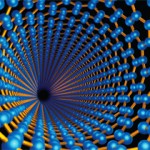There are frustratingly few therapeutic options for osteoarthritis, and our ability to slow or prevent cartilage damage is limited. A recent article published by Ruan and colleagues in Science Translational Medicine highlights the potential of one molecule, proteoglycan 4 (Prg4), also known as lubricin, to potentially slow the process of cartilage destruction in osteoarthritis.1
Lubricin is a large protein produced by chondrocytes and synoviocytes that helps protect joints by lubricating articular surfaces and dissipating strain.2 Mutations in the gene encoding lubricin cause a syndrome known as camptodactyly-arthropathy-coxa vara-pericarditis, which is characterized by premature joint damage.3 It has been previously shown in a rat model of posttraumatic osteoarthritis that intraarticular injection of Prg4 once or thrice weekly slowed loss of articular cartilage and accumulation of joint damage.4
In the current report, Ruan et al used two strategies to overexpress lubricin in the joints of mice, and then evaluated the effect of increased Prg4 expression in mouse models of osteoarthritis. First, the authors examined mice genetically engineered to secrete high levels of lubricin from chondrocytes. These mice have a normal size and stature; however, as they age, mice with increased production of Prg4 accumulated less age-related cartilage damage compared to wild-type control mice. In a model of posttraumatic osteoarthritis caused by transection of the anterior cruciate ligament, lubricin-overexpressing mice lost cartilage more slowly and maintained better function than wild-type control mice.
The authors then asked whether boosting lubricin production after an injury might also protect joints from posttraumatic cartilage loss. To do this, they injected into mouse joints an adenovirus-encoding lubricin, which infects synoviocytes and chondrocytes and stimulates increased lubricin production. Remarkably, when mice are subjected to ACL transection and then injected with the lubricin-encoding virus two weeks later, enhanced expression of lubricin reduces cartilage destruction assessed at the end of eight weeks. The mechanism by which increased lubricin expression protects joints may involve enhanced boundary lubrication or strain dissipation. In addition, through mRNA expression analyses, the authors suggest a mechanism by which lubricin may inhibit signaling pathways that drive chondrocyte hypertrophy and inflammation. The compelling in vivo results, including the ability to protect joints by treating even after the traumatic event, provide further support for the potential of lubricin supplementation to slow joint damage in clinical osteoarthritis. In the future, we may see intraarticular lubricin supplementation, or maybe even viral-induced lubricin overexpression, as a potential therapeutic option in osteoarthritis.
Dr. Rao is a rheumatology fellow at Brigham and Women’s Hospital in Boston.
References
- Ruan MZ, Erez A, Guse K, et al. Proteoglycan 4 expression protects against the development of osteoarthritis. Sci Transl Med. 2013;5:176ra34.
- Jay GD, Torres JR, Warman ML, Laderer MC, Breuer KS. The role of lubricin in the mechanical behavior of synovial fluid. Proc Natl Acad Sci USA. 2007;104:6194-6199.
- Marcelino J, Carpten JD, Suwairi WM, et al. CACP, encoding a secreted proteoglycan, is mutated in camptodactyly-arthropathy-coxa vara-pericarditis syndrome. Nat Genet. 1999;23:319-322.
- Flannery CR, Zollner R, Corcoran C, et al. Prevention of cartilage degeneration in a rat model of osteoarthritis by intraarticular treatment with recombinant lubricin. Arthritis Rheum. 2009;60:840-847.

